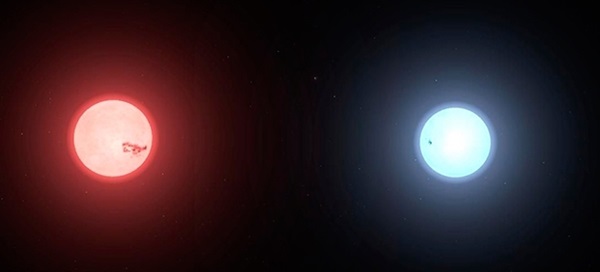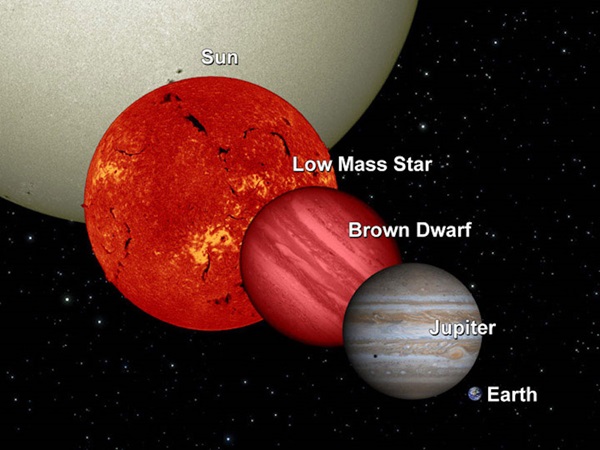Key Takeaways:
The work, published September 21 in the Monthly Notices of the Royal Astronomical Society, explores a low-mass binary system consisting of a 0.2-0.3-solar-mass white dwarf, and a 34-46-Jupiter-mass brown dwarf. Located in the constellation Perseus, this binary once held a normal, Sun-like star and a small substellar object, perhaps a brown dwarf (depending on its initial mass). But as the normal star began to swell into a red giant , the smaller object was engulfed — and instead of being destroyed, it triggered a massive ejection of material from the red giant that killed it instead.
How did this happen? First, the normal star began to swell, as stars do when they enter the last hydrogen-burning stage of their life cycles and become red giants. Our own Sun will expand to at least the circumference of Earth’s orbit (93 million miles [150 million kilometers]); this star likely did the same. As it swelled, it began to interact with its tiny substellar companion, first transferring mass to the smaller object, and then completely swallowing it within its (diffuse) outer envelope.
Things progressed until the energy transferred from the brown dwarf to the star’s envelope eventually caused a major ejection event, as the material became energized and shot out of the system entirely. Astronomers estimate that the material lost through this ejection was a large percentage of the star’s original mass, leaving it stripped down to its core as a white dwarf.
Such a “death” is unusual and, the astronomers say, “premature,” because it’s not usually how white dwarfs are formed. And all the while, the companion remained, though it never gained enough mass to begin burning hydrogen on its own (hence the reason it is a brown dwarf). The two now orbit each other closely with a period of just 3 hours.
Such a pair provides an interesting laboratory where astronomers can learn more about the interactions of stars in binary systems. And because about half of all stars are in binary (or greater) systems, with nearly every high-mass star in our galaxy living alongside at least one companion, understanding the interactions that occur between binaries is crucial to understanding how stars evolve — and die, sometimes prematurely.











